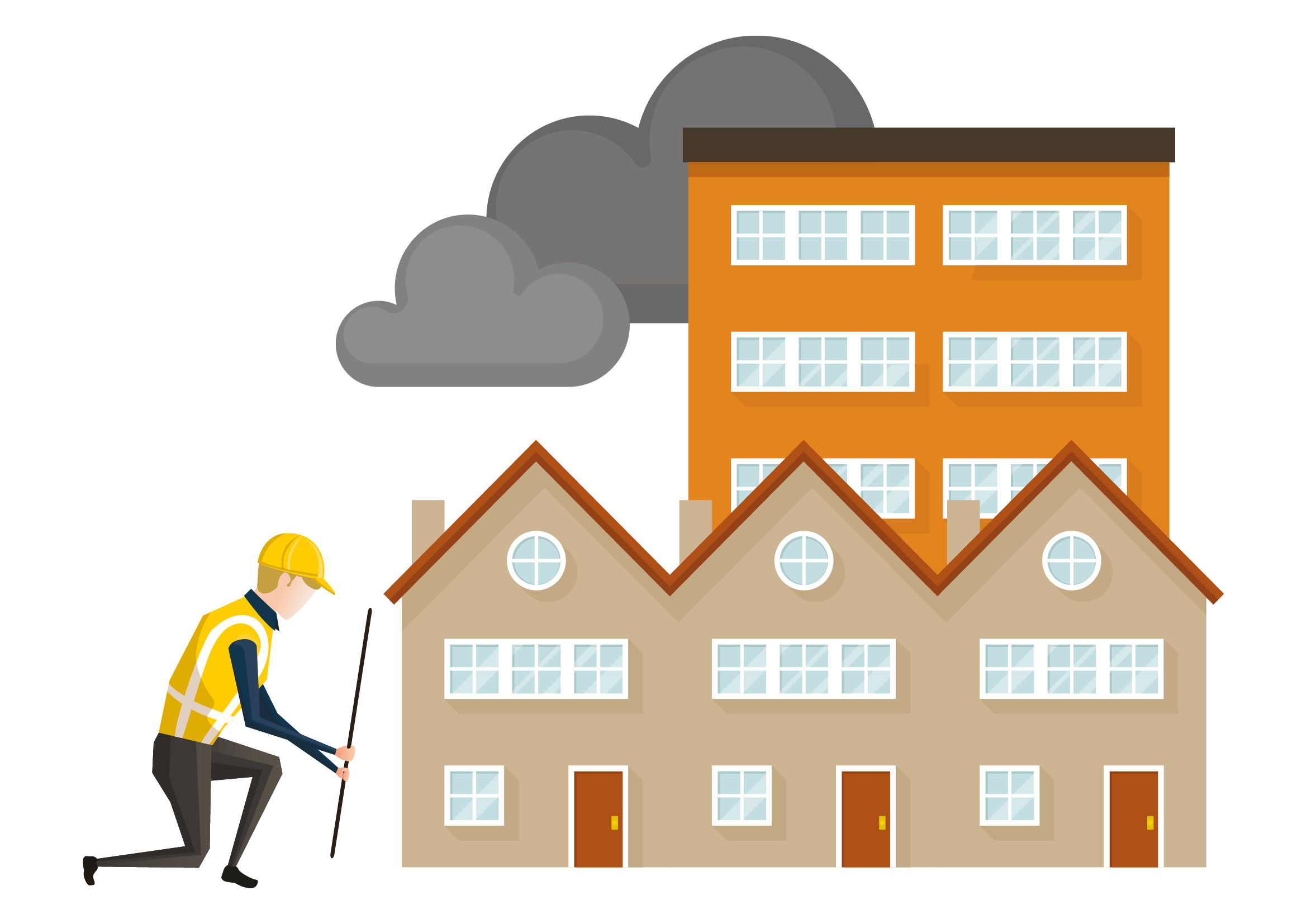Prepare Renovation packages
The 8 steps of INDU-ZERO renovation
In the following eight steps, the customer request is turned into a fully optimised renovation package.

The customers in this example are housing associations or large private owners who want to renovate several houses at the same time. Companies within INDU-ZERO have already developed the technologies for most of the following steps. The technology required for steps one until three will be developed outside of the INDU-ZERO project, the other technologies are already available on the market.
1.
Construction of the 3D model
The customer starts by taking pictures of the houses they wish to renovate. The customer then uploads the photos to the system together with information such as the number of houses to be renovated, the property dimensions, the wall types and the year of construction. Based on the pictures and inputted data, a 3D model of the houses is produced.
2.
Configuration of the renovation
The 3D model is then uploaded to an online configurator where the customer can configure the appearance of the desired house renovations. In this web-based programme, they can easily modify aspects such as:
- the material of the walls, such as render, timber look or bricks;
- a customised pattern in the bricks;
- the type of glass for the windows;
- extra options such as heat pumps and solar panels.
The effects of the changes instantly appear in the configurator.
3.
Indicative offer
Based on the 3D model of the existing building and the customer's renovation options, an indicative quotation of the renovation is automatically generated. The customer will even be presented with a multi-year maintenance cost estimation and an overview of the energy-use cost before and after the renovation. Based on this reduction, a payback period (how long the energy savings take to pay for the renovation costs) will be calculated.
4.
Measurement of the houses
If the customer is happy with the indicative quote, a detailed offer will be provided. To do so, the first step would be to measure the houses with the latest 3D scanning technology. This laser technique can quickly measure existing buildings to an accuracy of 1 mm. Once the 3D scanner's data is processed, it delivers an accurate 3D model of the existing building.
5.
Complete information model
The geometric 3D model of the current house(s) will be supplemented with extra data such as:
- heating, fresh air and hot water demand;
- the energy demand per system;
- electrical routing.
6.
Fitting renovation package
Now the houses’ 3D information model is complete, the details of the renovation are clear. Based on the information model, the factory will advise the customer on recommended systems for the customer to choose. The model is then adapted to include the proposed retrofit packages. As an example of a renovation package, this could include wall and roof panels plus the installation of a heat pump and a solar power system.
7.
Optimise renovation package
The model presents a 'before and after' simulation to confirm the efficiency of the upgrade. Where the predicted improvements in energy use, indoor comfort and emissions are not acceptable, exploratory simulations would be undertaken to refine the upgrade specification. The software will analyse the constructability of the upgrade so the renovation package can be optimised where necessary. Customers can experience the new look of their future houses through a Virtual Reality environment which allows them to explore the 3D model of the finished project.
8.
Signing contract
Based on the optimised renovation package the customer is provided with a definitive offer and a contract will be drawn up. It will state the details of the project including the renovation time and warranty conditions. If the customer is happy with the technical, visual and financial details, the contract will be agreed upon and signed. Once the contract has been signed, the production and logistics required for the renovation packages will be scheduled. Based on the data from the customised 3D information model, the factory robots will be programmed to produce it according to the wishes of the customer.
The production process will be described further in the following section.